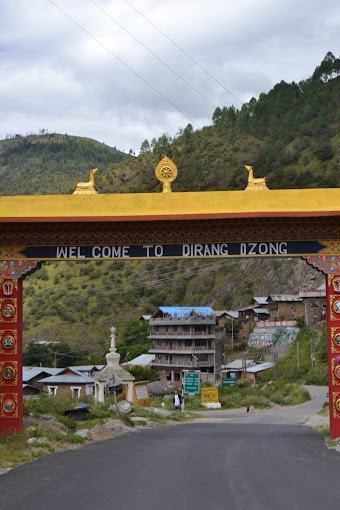
The Historical Significance of Dirang Dzong
Just 5 kilometers from Dolma Homestay lies one of Arunachal Pradesh's most significant historical landmarks - the Dirang Dzong. Dating back to the 17th century, this ancient fortress is perched on a small hillock overlooking the Dirang River and serves as a fascinating window into the region's rich past.
The dzong (fortress) was originally built as an administrative center during the time when the Monpa kingdom was at its height. Its strategic location on the ancient trade route between India and Tibet made it an important center of commerce and cultural exchange.
"Dirang Dzong stands as a silent witness to centuries of history, offering visitors a glimpse into the traditional architecture and lifestyle of the Monpa people of Arunachal Pradesh."
Architectural Marvel
The Dirang Dzong showcases traditional Monpa architecture with its stone foundations, thick walls, and wooden structures. The fortress complex includes several buildings arranged around a central courtyard, typical of Tibetan-influenced architecture found in this region.
The most striking feature of the dzong is its main administrative building with multiple stories and characteristic sloped roofs. The narrow alleyways, stone-paved paths, and wooden houses within the complex offer visitors an authentic glimpse into the traditional lifestyle that has been preserved here for centuries.
Cultural Importance
The dzong holds immense cultural importance for the Monpa community, one of the major tribes of Arunachal Pradesh. It represents their heritage, architectural prowess, and administrative systems that helped govern the region.
Today, while no longer an administrative center, the dzong remains a living heritage site where several families continue to reside, maintaining their traditional way of life. Visitors can observe local customs, traditional weaving, and other crafts being practiced within its ancient walls.
Visiting Dirang Dzong
Best Time to Visit
The best time to visit Dirang Dzong is between March and October when the weather is pleasant, and the roads are easily accessible. The morning light provides the best photography opportunities, highlighting the architectural details and offering panoramic views of the surrounding valley.
What to Expect
- A moderate uphill walk to reach the dzong
- Interaction with local Monpa people who still reside in the fortress
- Opportunity to see traditional houses with characteristic woodwork
- Panoramic views of Dirang town and the surrounding mountains
- Small shops selling local handicrafts and textiles
Photography Tips
The dzong offers excellent photography opportunities, especially during golden hour. The contrast between the ancient stone structures and backdrop of rolling mountains creates stunning compositions. Be respectful when photographing locals and always ask for permission.
How to Get There From Dolma Homestay
Dirang Dzong is approximately 5 kilometers from Dolma Homestay, making it an ideal half-day excursion. From our property:
- By car: 15-minute drive
- By taxi: Easily available from the homestay (our staff can arrange this for you)
- Walking: Approximately 1-hour scenic walk (moderate difficulty)
Our staff at Dolma Homestay can arrange guided tours to ensure you get the most from your visit to this historical landmark. We recommend combining your dzong visit with other nearby attractions like the hot springs and National Yak Research Center for a full day of exploration.
Visitor Information
Entry Fee: No entry fee
Timings: Open throughout the day
Duration: 1-2 hours recommended for exploration
Special Note: Wear comfortable walking shoes and dress modestly out of respect for local culture
Experience the best of Dirang's historical attractions